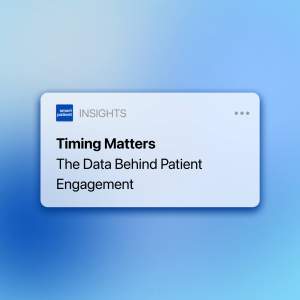Undertreatment in Asthma: Why Pharma Should be Doing More to Activate Patients
Many people living with asthma are undertreated and could benefit from innovative treatments, such as biologics. However, awareness of such treatments among patients remains low. By running targeted awareness and educational campaigns, pharma can activate asthma patients and help bridge the treatment gap

- Undertreatment is a long-standing problem in asthma, which seriously affects the quality of life of many patients
- Pharma is typically reluctant to engage patients for fear of breaching advertising restrictions; however, activating patients can help overcome some of the factors that contribute to undertreatment
- Using the MyTherapy Campaign Engine, pharma can engage and activate patients living with asthma
Undertreatment in asthma is a well-established problem. Many patients could have a better quality of life by receiving innovative treatments, such as biologics. A lack of awareness among patients of such treatments in one of the contributing factors to undertreatment; pharma, though, is cautious about running educational campaigns for fear of breaking advertising restrictions. Read how pharma can run such campaigns compliantly and help more patients receive the best treatment for them
Undertreatment in Asthma: What is the Problem?
Up to 17% of asthma cases are considered difficult to treat. For decades, studies have repeatedly found that undertreatment is a significant problem in regard to asthma; in 2006, a Danish study suggested that over three-quarters of people living with asthma are undertreated.
Severe and uncontrolled asthma can have serious consequences for patients’ quality of life, and has been linked with depression and suicidal thoughts among young people.
However, modern treatments for asthma hold the potential to improve the quality of life for many patients. A 2017 study concluded that “severe asthma is detrimental to the quality of life of patients. Therapies targeted to improve QOL include the approved and emerging biologics as well as combating risk factors and comorbidities, and improving the levels of disease control.”
While there is an extensive and complicated range of factors that result in widespread undertreatment, pharma could be doing more to increase awareness of treatment options among the asthma patient community and encourage patients to take a more active role in their treatment.
How Patient Activation Campaigns Can Help Bridge the Treatment Gap
The majority of pharma’s marketing efforts, particularly outside of the US, are directed at healthcare professionals. Patients are largely ignored for fear of breaching advertising restrictions. Patient activation campaigns that pharma does run for treatment such as biologics are largely centered around generic websites that contain information lifted straight from the safety informational leaflet. There is often little in the way of effective targeting or analysis, with little more than clicks acting as an indicator of performance.
This approach means that pharma is failing to meaningfully engage the asthma patient community.
In failing to engage patients, pharma is missing a key part of the puzzle when it comes to treatment decisions. As discussed in a previous post regarding launch excellence, patients can play an influential role in their treatment if they take an active role.
By educating patients and increasing awareness of newer treatment options, pharma can encourage patients to ask the right questions of their healthcare professionals and challenge decisions if their treatment is not working for them. This can help tackle some of the reasons for undertreatment; for example, we discussed previously how healthcare professionals can be reluctant to prescribe biologics for psoriasis, due to “not wanting the hassle of explanations and safety discussions, the time involved in obtaining prior authorization, a lack of exposure to biologics during residency training, fear of an increased workflow, outdated safety concerns, and inconvenience.”
This is not to blame healthcare professionals, who make decisions that they believe are best for patients. It is, however, to demonstrate how giving patients the tools to have open and informative discussions with their doctor can help overcome some of the roadblocks to more effective treatment options. And while treatments such as biologics are not suitable for everyone living with asthma, increasing awareness and activating patients can help ensure that more people who would benefit from them can access them.
Run Compliant Patient Activation Campaigns Using Our MyTherapy Campaign Engine
Pharma’s typical patient activation campaigns suffer from outdated marketing techniques combined with pharma’s reluctance to promote patient-facing content.
While it is true that activation campaigns must remain compliant and, therefore, cannot be ‘marketing’ campaigns in the typical manner, modern performance marketing methods can be applied to maximize reach and effectiveness.
Our MyTherapy Campaign Engine makes use of the MyTherapy userbase and curated web audiences to allow pharma to run content campaigns that target specific user groups. Furthermore, our analytics tools can help us understand user behavior beyond simple clicks, such as those who create reminders for certain medications within MyTherapy.
The result for pharma is the ability to run highly targeted campaigns that promote compliant educational content, while only paying for clicks that drive patient activation.
Combined, this helps pharma achieve cost-effective patient activation that can help tackle serious issues within healthcare, including undertreatment in therapeutic areas such as asthma. Sound interesting? Don’t hesitate to get in touch.





